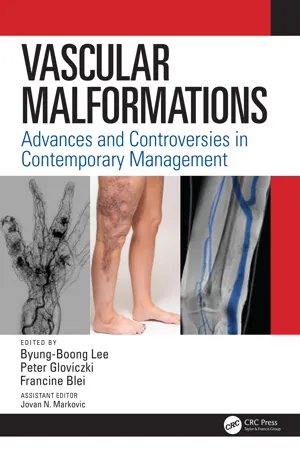
Vascular Malformations
Advances and Controversies in Contemporary Management
Byung Boong Lee, Peter Gloviczki, Francine Blei, Byung Boong Lee, Peter Gloviczki, Francine Blei
- 424 pages
- English
- ePUB (adapté aux mobiles)
- Disponible sur iOS et Android
Vascular Malformations
Advances and Controversies in Contemporary Management
Byung Boong Lee, Peter Gloviczki, Francine Blei, Byung Boong Lee, Peter Gloviczki, Francine Blei
À propos de ce livre
This new book on vascular malformations brings together international experts to present advances and discuss controversies in the multidisciplinary management of patients with congenital vascular malformations.
Major advances in recent years in medical genetics, and tremendous progress in the fields of imaging and minimally invasive percutaneous interventions have revolutionized both evaluation and management of vascular malformations. The six major parts of this state of the art book ensure that the reader has the most up to date valuable clinical information to ensure the delivery of world class clinical practice. Beautifully illustrated with color line drawings, numerous photographs and informative tables, the advances and controversies of the full spectrum of vascular malformations are presented in 90 definitive chapters.
Vascular Malformations brings new information and unparalleled insights to vascular specialists and physicians, trainees and allied health professionals who participate in the care of patients with vascular malformations, either in a private practice setting or at a major institution in an interdisciplinary vascular center.
Foire aux questions
Informations
